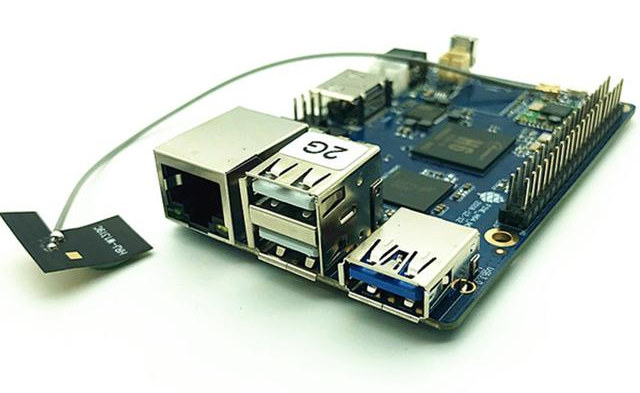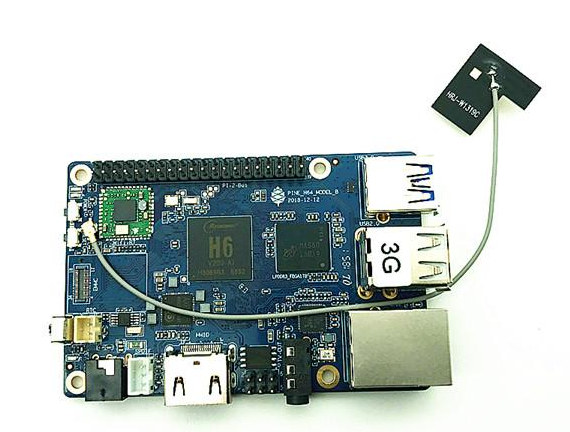Pine H64 development board was introduced about a year ago with an Allwinner H6 processor, 1 to 3GB RAM, Gigabit Ethernet, a USB 3.0 port, a PCIe socket, and more with the legacy Pine A64 form factor and price starting at $25.99 for the 1GB RAM version.
However, Pine64 made a few announcements at FOSDEM 2019, and beside the upcoming Pinebook Pro Linux/*BSD laptop, the company also mentioned a new PINE H64 Model B, still based on Allwinner H6 processor, but instead following Raspberry Pi form factor also used by the company’s Rock64 SBC. The new board is still not available on the official Pine64 store, but Ameridroid is already taking orders for Pine H64 Model B for $38.95 (2GB RAM) and $48.95 (3GB RAM).
 Pine H64 Model B specifications:
Pine H64 Model B specifications:
- SoC – Allwinner H6 quad-core Arm Cortex-A53 processor @ 1.8GHz with Arm Mali T-722MP2 dual-core GPU supporting OpenGL ES 3.1/3.0/2.0/1.1, OpenCL 1.2/1.1, ATSC (Adaptive Scalable Texture Compression)
- System Memory – 2GB or 3GB LPDDR3 RAM
- Storage – 128Mbit SPI Flash memory, eMMC socket, microSD slot up to 256GB (SDHC and SDXC support)
- Video Output – HDMI 2.0 out up to 4KP60 with HDCP2.2
- Audio – 3.5mm stereo earphone/microphone plug; HDMI digital audio; SPDIF connector
- Connectivity – 10/100/1000Mbps Gigabit Ethernet; 802.11b/g/n WiFi 4 @ 2.4G + Bluetooth 4.0 LE via RTL8723BS module; External antenna
- USB – 1x USB 3.0 host port, 2x USB 2.0 host ports
- Expansion – 40-pin PI-2 GPIO Header
- Misc – RTC battery connector for integrated real-time clock, power & reset buttons
- Power Supply – 5V via power barrel
- Dimensions – ~ 86x54mm like Rock64 or Raspberry Pi boards
PCIe is gone from the board, but it’s not really a big issue, since PCIe implementation in Allwinner H6 is botched. The new model B is software compatible with Pine H64 (2018) so you’ll find resources and documentation on the old Wiki, and you can also use Pine H64 WiP (Work-in-Progress) Armbian image with the new board, or Android 7.1.

Jean-Luc started CNX Software in 2010 as a part-time endeavor, before quitting his job as a software engineering manager, and starting to write daily news, and reviews full time later in 2011.
Support CNX Software! Donate via cryptocurrencies, become a Patron on Patreon, or purchase goods on Amazon or Aliexpress





